Edited by Sandra Crisp LG.
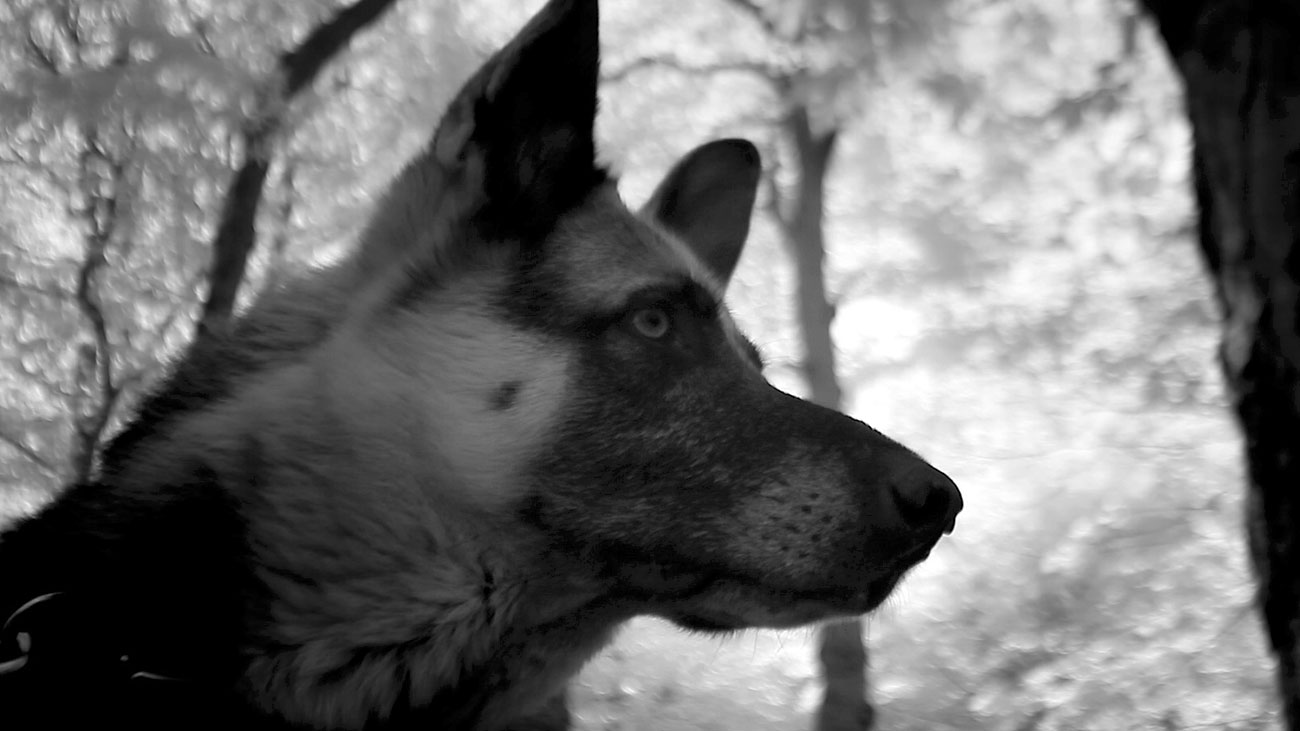
Sandra Crisp LG: “Your short film ‘The Search’ was shot using infrared photography – The camera tracks a cadaver dog through a dense forest at night-time whilst aerial camerawork reveals micro detail such as bristling leaves. The audio track heightens the overall sense of suspense. In the National Archives, fingerprints belonging to notorious and well-known figures are photographed then etched onto glass vessels to create ‘Traces’ series. I would really like to hear more about your use of forensic imaging and scientific photography process or any other unusual techniques used within your practice.”
Eric Fong: My practice is driven by my interest in the juncture between art and science, informed by my experience as a former medical doctor. I work in a range of media, including photography, film, sculpture and installation. My work is research-based and concept-driven, and often involves multidisciplinary collaboration.
My recent works focus on forensic anthropology and crime scene investigation. Working with forensic anthropologists at two UK universities, I conducted archive research and attended lectures, seminars and workshops in laboratories and off-site locations. Inspired by film noir, black and white crime scene photographs from mid-century police archives, and insight gained from my research and collaboration, my recent works explore themes of vulnerability, entropy and death.
The Search
The Search is part of a multisensory installation, entitled Thanatos, which centres on an eponymous original perfume that evokes the scent of death, a project supported by Arts Council England. It is a dreamlike short film of a dog searching for a missing body in a forest, shot in infrared. It is inspired by one of the practical applications of the scent of death research – to facilitate the training of cadaver dogs.
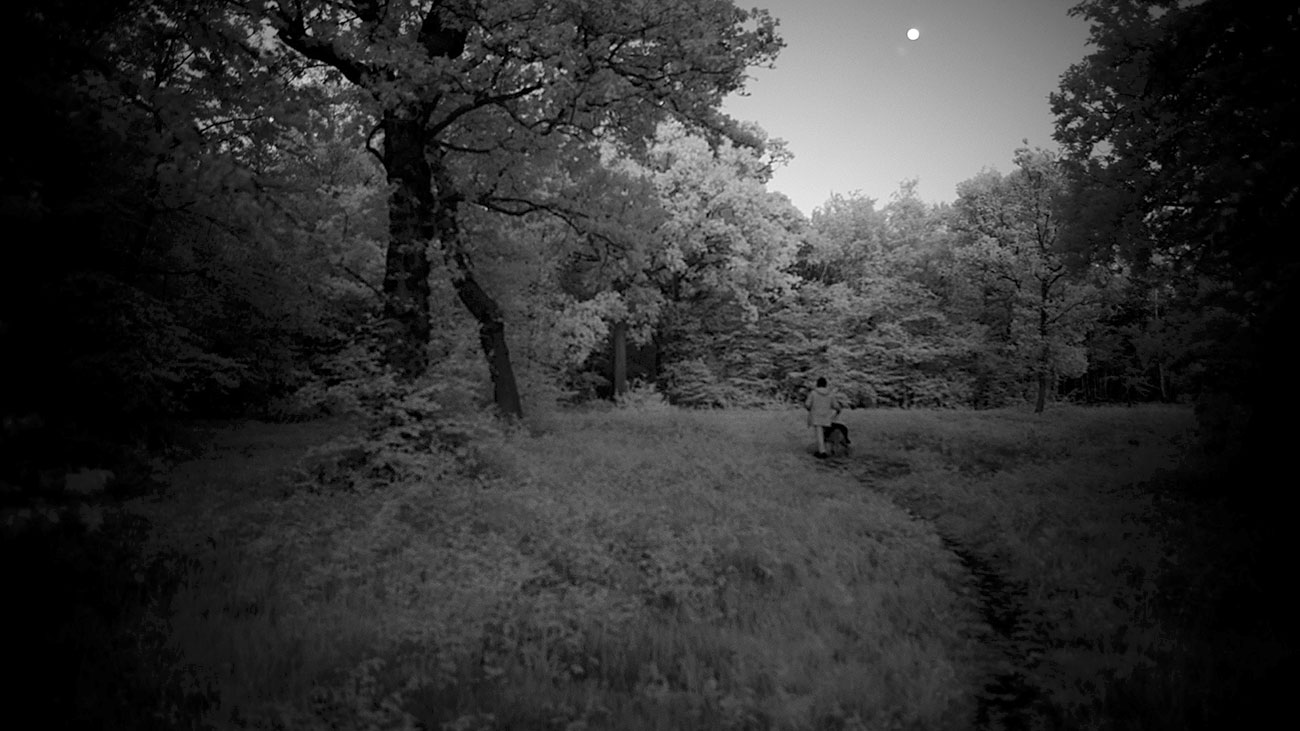
The making of The Search involved multidisciplinary collaboration. Our team includes the following:
- Forensic anthropologist – consultant on the science of the scent of death and cadaver dogs
- Director – myself
- Producer – project management
- Cinematographer – for static and tracking shots on the ground
- Camera assistant – shadowing the cinematographer to assist with tracking movements and lens changes
- Aerial cinematography – The Helicopter Girls (thehelicoptergirls.com), a high-profile international drone service provider which worked on feature films such as Mission Impossible 5 and Jack Ryan. The drone pilot navigates the drone while the aerial camera operator does the filming with the camera attached to the drone
- Sound recordist – records the sound on location
- Dog handler and dog
- Runners – securing the premises during filming so that the public doesn’t wander into it accidentally etc.
- Film edit consultant – works with me on the rough cuts and final version
- Film colourist – grading the film to optimise colour and exposure levels
- Music composer – composes music for the film
- Sound designer – works with the composer and designs the entire soundtrack for the film.
Some of the challenges during the filming and production include the following:
- Finding a cinematographer and aerial film service provider with experience in infrared cinematography
- Sourcing infrared cameras for ground and aerial cinematography, as they are quite specialised and rare. We hired a Canon 5D (for ground photography) and a Sony A7R (for aerial photography) with sensors that have been modified for infrared photography
- Finding a location (forest on public land) that allows drone filming and doesn’t charge huge location fees
- Finding a date for filming when all the film crew members are available
- Rescheduling the filming date when the first one was cancelled due to rain
- Filming in low light when it got dark
- Editing several hours of footage down to 4.5 minutes
It was my first time working with a film crew. Although the size of the crew is very small in comparison to commercial films, I learned how complicated it is to prepare and do just a one-day shoot. It was a great experience and I enjoyed it very much.
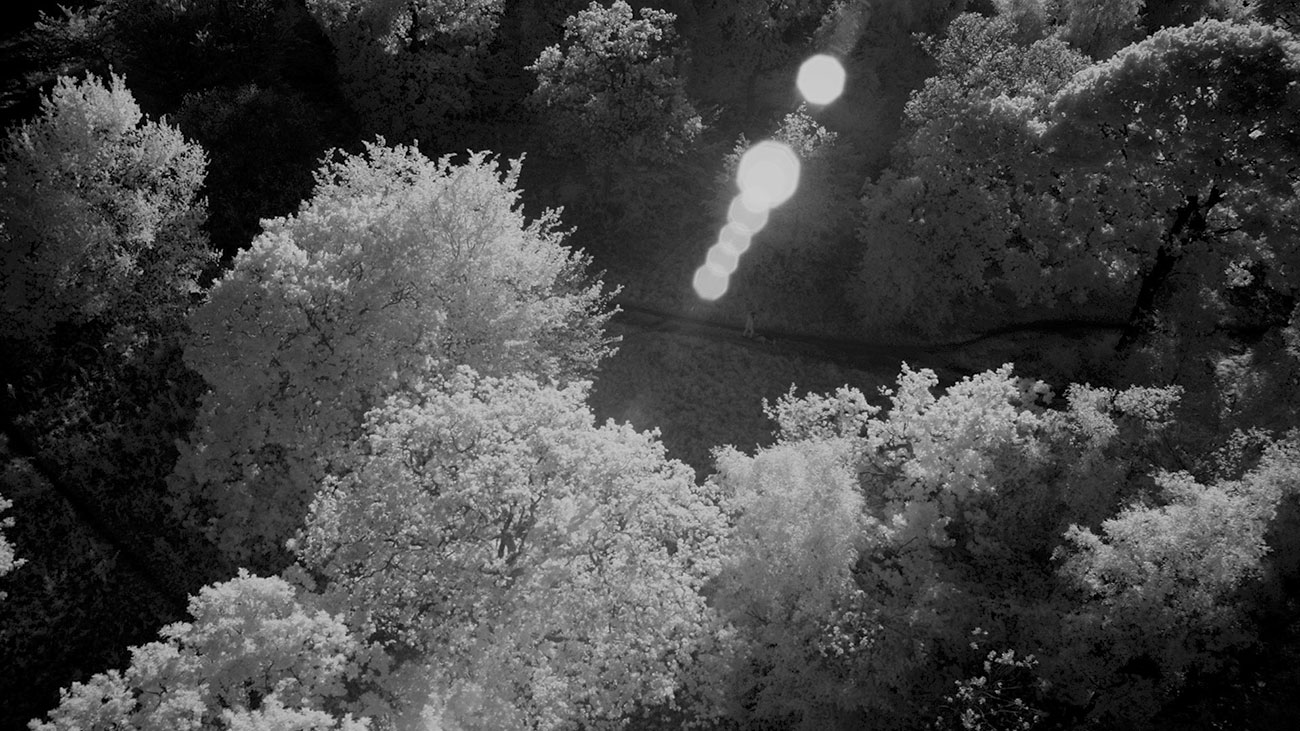
Every Contact
This body of work was inspired by the dictum “Every contact leaves a trace” – Edmond Locard (1877-1966), French criminologist.
For Every Contact, I conducted research at the National Archives and photographed (with permission) the fingerprint records of people of historical interest. The photographs were then digitally optimised and then sent to a specialist sandblasting service provider. From these photographs, the specialist created templates and used them as resists for sandblast etching onto glass objects relevant to the history of the subjects.
For instance, Heinz 57 Varieties (Ronnie Biggs) was inspired by the Great Train Robbery of 1963. According to police records, a Heinz 57 Varieties ketchup bottle bearing gang member Ronnie Biggs’ fingerprints was found in the farm where the gang hid immediately after the robbery. It became an evidential exhibit during his trial. This work is a 1960s’ ketchup bottle (sourced from eBay), etched with copies of Ronnie Biggs’ fingerprints from his police records in the National Archive. The original ketchup bottle is kept in the Crime Museum in New Scotland Yard in London, which is inaccessible to the public.
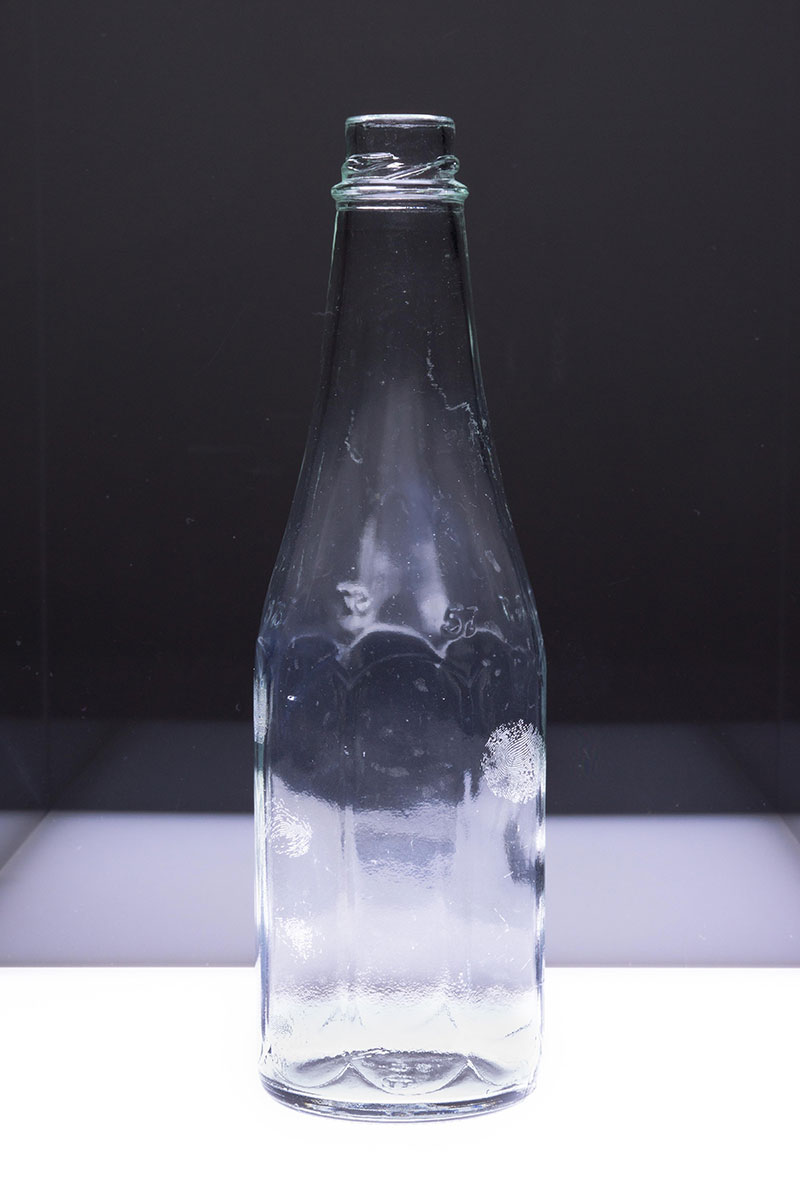
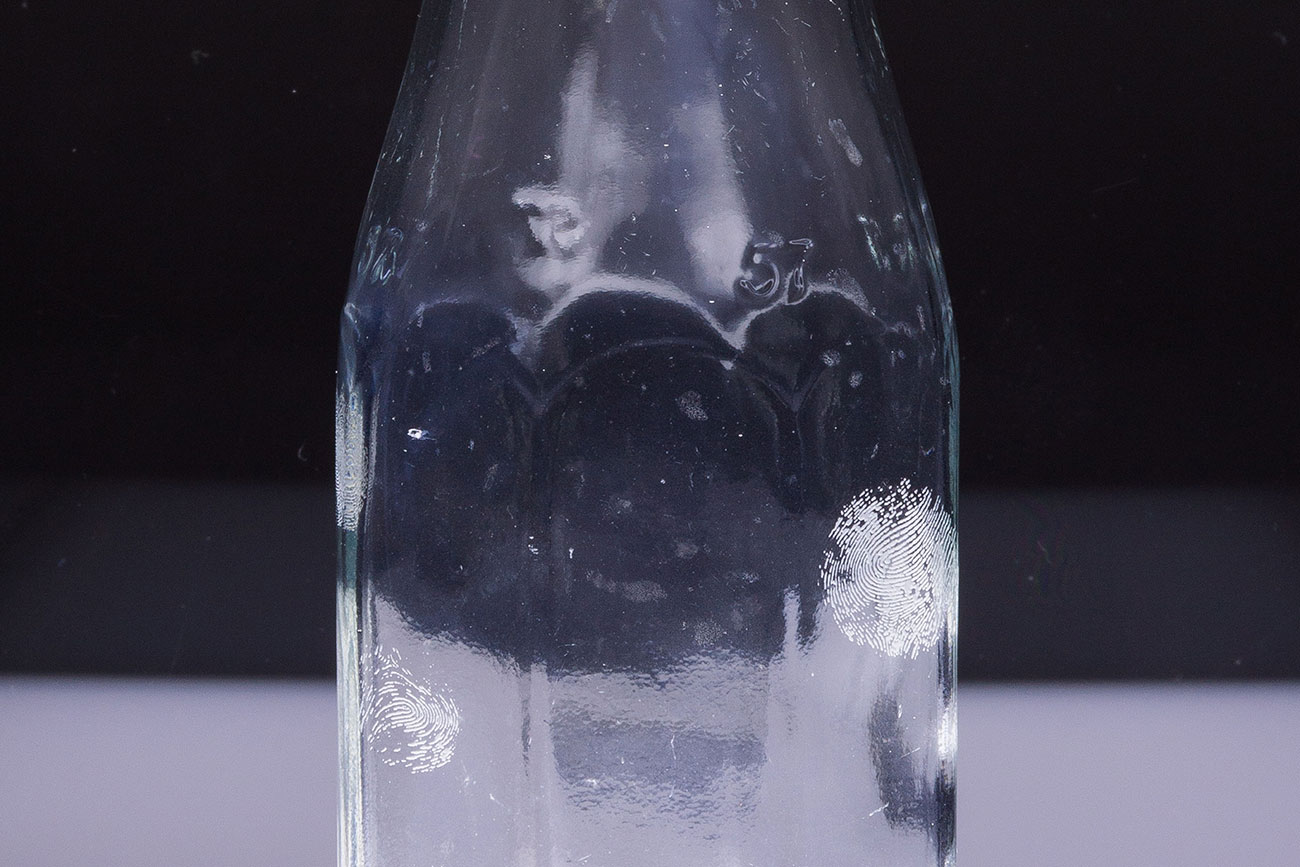
Eric Fong LG, 2021
ericfong.com
Additional details and other works in these series:
Every Contact
The Search / click to view video
Thanatos
Current Exhibitions
RBSA photography prize exhibition, RBSA Gallery, 4 Brook Street, St. Paul’s Square, Birmingham, B3 1SA (And online) 3 September – 16 October 2021
The Royal Academy of Arts Summer Exhibition, The Royal Academy of Arts, Burlington House, Piccadilly, London, W1J 0BD 22 September 2021 — 2 January 2022
‘In Plain Sight’ The London Group exhibition, Thelma Hulbert Gallery, Elmfield House, Dowell Street, Devon EX14 1LX, 27 August – 30 October 2021.
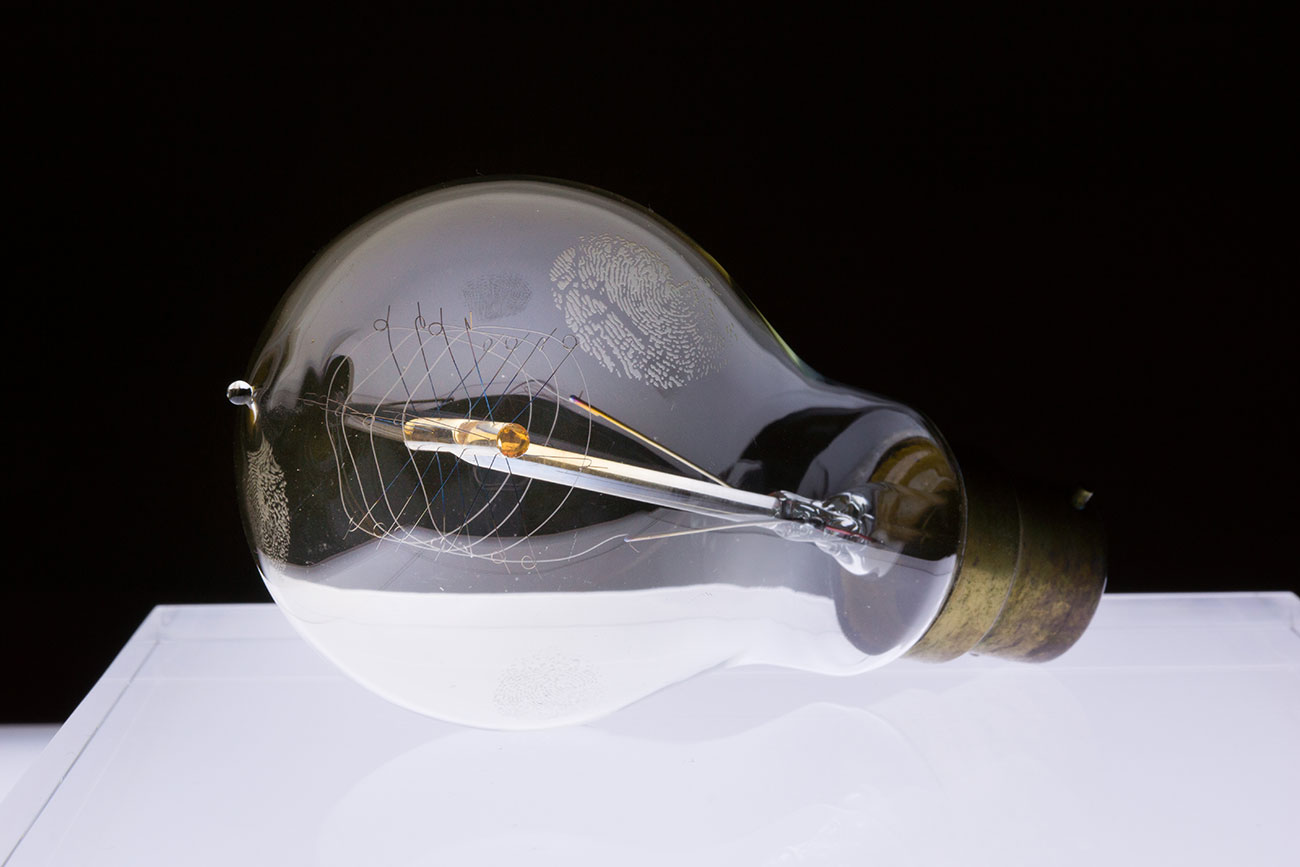
A Question of Process
#9 Charlotte C Mortensson LG
#11 Judith Jones LG
